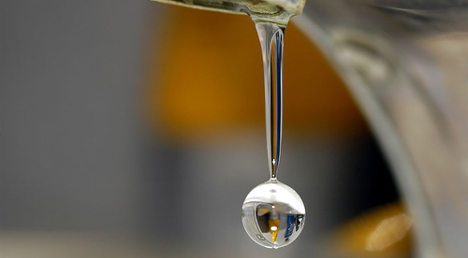Although nearly three-quarters of our planet is covered in water, only 1 to 2 percent can support terrestrial life. Growing human demand, the proliferation of urban sprawl, and wasteful agribusiness consumption are draining our reservoirs and straining water treatment, distribution, and disposal systems. As water is hijacked from rivers and streams, the amount of sand that accumulates on beaches also diminishes, threatening the health of vital coastal wetlands and wildlife.
Droughts, flooding, and other extreme weather events exacerbated by climate change are also making fresh water an increasingly scarce commodity. In fact, the struggle over the world’s depleting water resources, much like with oil today, is a crisis that will likely come to a head some time this century.But even if you live in an area with abundant water resources, helping to conserve what comes out of your faucet will also save you money and energy. Here are some ways you can help, excerpted from 50 Ways to Save the Ocean (2006, New World Library) by David Helvarg.
1. If your toilet was installed before 1992, add a toilet dam to reduce the amount of water flowing out of it by 35 percent and still leave it functioning properly. (Never use a brick to displace water in the tank, because it can deteriorate and clog your pipes.)
2. If possible, replace your old toilet with a modern low-flush one. While using only about half the water of old-style toilets, most newer models are now highly efficient.
3. Install a low-flow showerhead to reduce your shower water use by 20 to 60 percent.
4. Put aerators on all your faucets. They reduce the amount of water but add air bubbles to the flow remains lively. This way you can reduce your household water flow by two gallons a minute.
5. Check your pipes and water equipment for leaks, which can waste thousands of gallons of water a year.
6. Purchase water-saving appliances, such as front-loading washing machine and low-water-use dishwasher, and wash only full loads.
7. Turn off the tap while brushing your teeth. Fill the basin for washing or shaving.
8. Wash fruits and vegetables in a bowl, and fill you sink to wash and rinse dishes, instead of running the water.
9. Landscape your property using native plants appropriate to your climate, so that they won’t require excessive watering and will retain soil moisture.
10. Use a rain barrel to collect water from your roof’s downspout to irrigate your garden.
11. Sweep, rather than spraying down, your driveway and sidewalk.
Source: http://www.treehugger.com/
Dear User/Visitor! Please, answer on our questions: tick off one of the positions – your answer will make us able to improve our site and make it more interesting and useful!


